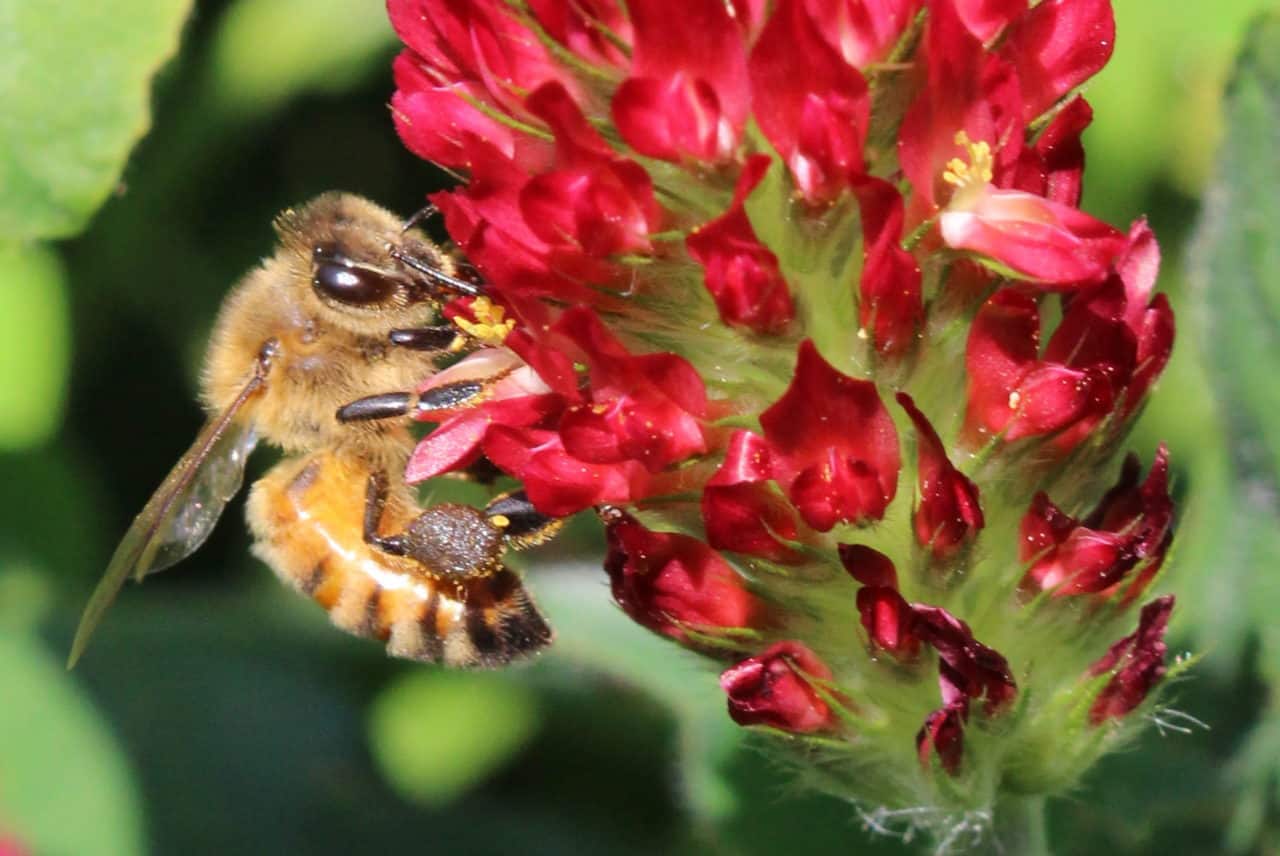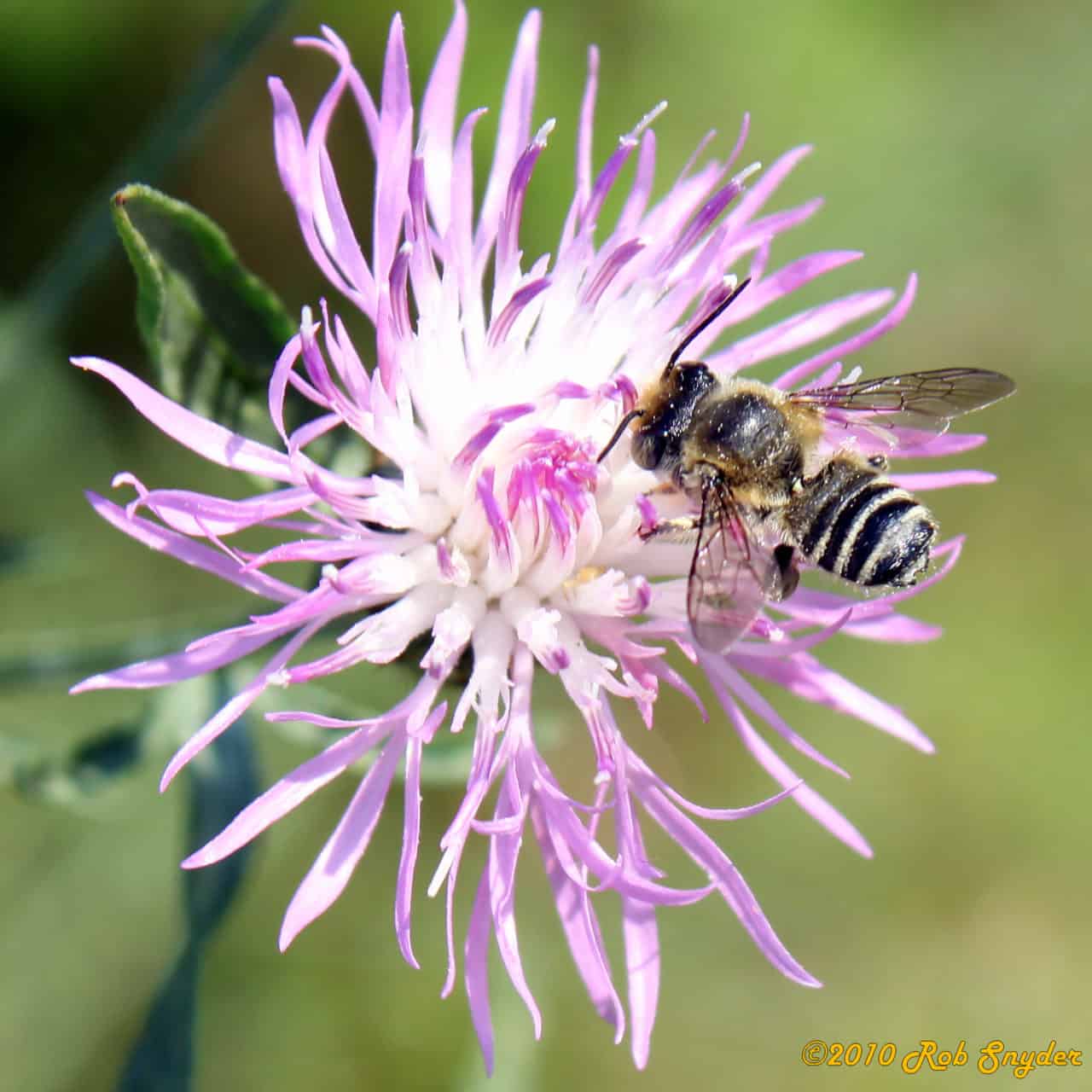In the twin cities, spring brings complaints- about creeping charlie taking over lawns, strangling garden plants, and being generally relentless. But is the creeping charlie flower a good source of food for bees? In researching creeping charlie, we uncovered a fascinating story about this invasive plant’s strategy to draw insect pollinators. Creeping charlie draws a lot of insect visitors, including bees. Sweat bees, bumble bees, and honey bees are among its most popular insect visitors. Creeping charlie flowers have an interesting strategy for rewarding pollinators. This strategy is called “lucky hit.” They produce nectar with an average volume of 0.3 mL per flower, but the…
Category: Pollination
Tart Cherry Pollination
The summer of 2017 is an exciting time for the Bee Informed Partnership as industry support and beekeeper interest has facilitated the expansion of a new BIP Tech Transfer Team based in Michigan. This expansion into a new territory means learning about the specifics of the local landscape, agricultural systems and beekeeping calendar in order to better serve the local beekeeping operations. Most Michigan-based beekeeping operations spend the winter in Florida or other warmer states and return to Michigan in the spring for fruit pollination and honey production through the summer and autumn. Tart cherries are one of the most prevalent pollination crops in Michigan…
Clover Seed Pollination
Clover seed is an important crop grown in western Oregon that benefits rom hired honeybee colonies to boost yields. The Willamette Valley has an ideal climate for seed production with high annual rainfalls that allow growing without irrigation but infrequent rains in July and August allow seed to be harvested with limited risk of moisture damage. There are three main types of clover grown for seed in Oregon with all belonging to the Trifolium genus of the Fabaceae family. They are red clover (T. pratense), crimson clover (T. incarnatum) and white or Dutch clover (T. repens). In addition to clovers the Fabaceae family includes other…
Meadowfoam Pollination
May in the Willamette Valley is a time of lush green fields of grazing pasture and grass seed crops covering the flatlands along the I-5 corridor from Eugene to Portland. These verdant fields are punctuated by small plantings of dense, low growing, brilliantly white flowers, appropriately called Meadowfoam. Meadowfoam (Limnanthes alba) is an annual oilseed crop with a native range from Vancouver Island, BC to northern California. The oil derived from Meadowfoam seeds contains long-chain fatty acids that are very stable relative to other vegetable oils. This resistance to degradation make it a valuable ingredient to prolong shelf life of products and it is of…
Real Time Disease Load Monitoring Pollen Diversity
It’s the end of another honey bee season - and as the little gals are hunkering down, bracing for the cold winds of winter, our lab technicians are getting to work compiling data and publishing reports. Also coming with the end of the season is the close of our second official year of a project called Tier 4, or Real Time Disease Load Monitoring. This project provides colony health information to commercial, sideline and small-scale beekeepers. This year, fifteen of our Tier 4 participants collaborated with us on the Pollen Trap Collection Pilot study. The purpose of the pollen trap project is to give beekeepers…
Hybrid Carrot Seed Pollination
Carrot (Daucus carota) is a biennial member of the Apiaceae family that includes other familiar edibles like celery, parsley, fennel and dill. When grown for food, carrots are harvested at the end of the first growing season. Seed production requires the plant to receive sufficient winter chilling followed by flowering in the second season. Seed carrot is typically planted in August, pollinated the following July, and harvested in September. Producing carrots with the desired eating and aesthetic characteristics for the fresh market requires hybrid seed from carefully selected lines. Hybrid seed production involves using a male fertile-line to act as a pollen donor for a male-sterile…
Watermelon pollination
Beekeepers in the Pacific Northwest are not blessed with the high honey yields of beekeepers in other regions of the country. They are more reliant on renting their bees to pollinate crops and fortunately the agriculture of the PNW has a variety and abundance of commercially grown crops that require or benefit from honeybee pollination. In our work as the PNW Tech Team, Ellen and I are fortunate to work with our beekeepers and sample their colonies while pollinating many different crops in the region. This is the first installment of a series of 'Crop Pollination Profiles' where I'll outline the basics of cultivating each…
Alfalfa Leafcutter Bee (Megachile rotundata)
Megachile rotundata (or the alfalfa leafcutter bee) is a species native to Eurasia that was introduced into the United States after the 1930’s because of a drop in seed production. This bee was brought into the US to increase pollination yields of Alfalfa for seed because honey bees are not the best pollinators of the crop. M. rotundata was also introduced to New Zealand (1971) and Australia (1987) for the same reasons. This solitary species is now widespread across the United States with many feral populations. Alfalfa has a tripping mechanism that triggers the stamen (pollen reproductive organ) to strike the pollinator enabling pollen transfer…
Joe Traynor’s Post-Pollination Letter
To many beekeepers who keep a few colonies in their backyard or even for some who have 50 or 100 colonies, moving bees to pollination is not something they would ever consider. Just like reading the Travel section in the paper or travelogues by seasoned globetrotters, arm chair beekeepers can read what happened in almonds this year. Joe Traynor, owner of Scientific Ag. Co. (a pollination service and consulting company) was kind enough to allow us to blog his latest post-pollination letter here (click on link below). The newsletter is like reading a letter from a family member with some back-fence news included. It is…
Blueberry Pollination in Maine Video
Here is a video I helped produce introducing commercial lowbush blueberry pollination in Maine. As part of a Specialty Crops Research Initiative (SCRI) project, this video series comes from the project titled 'Pollination Security in the Northeast' . We interviewed blueberry growers, beekeepers, and the researchers involved in this project to get to the bottom of, how blueberries are pollinated, the challenges, and some of the work this SCRI group is doing to improve pollination security of lowbush blueberry. Native bees are real important in bringing in the lowbush blueberry crop, overall, but commercial honey bees are real important, especially on the large commercial fields.…


